Trivia Browser

▲
1
▼
 One of the dungeon rooms in the game features children locked in jail cells. The player can free the children by pushing on a spot in the wall, but upon being freed, they will attack the player. Series creator Richard Garriot created this room in an effort to involve players emotionally and psychologically in the gameplay by posing a situation where they alone would have to think and decide whether or not to slaughter children. While killing the children is the easiest way to get out of that room, there are multiple methods to spare the children, such as using the Charm or Sleep spells. The game offers no punishment or reward for sparing or killing them, and since this event had no impact on the rest of the game, Garriot did not care how players resolved it.
One of the dungeon rooms in the game features children locked in jail cells. The player can free the children by pushing on a spot in the wall, but upon being freed, they will attack the player. Series creator Richard Garriot created this room in an effort to involve players emotionally and psychologically in the gameplay by posing a situation where they alone would have to think and decide whether or not to slaughter children. While killing the children is the easiest way to get out of that room, there are multiple methods to spare the children, such as using the Charm or Sleep spells. The game offers no punishment or reward for sparing or killing them, and since this event had no impact on the rest of the game, Garriot did not care how players resolved it.This room would spark internal controversy when a religious fundamentalist playtester working at Origin Systems' New Hampshire division discovered the room and became outraged, believing the company was promoting child abuse. Instead of contacting Richard Garriot, he wrote a letter to Richard's brother Robert outlining his grievances with it and his resignation from the company, which led to Robert and his parents arguing with Richard over the phone to remove the room from the game. He defended the room by pointing out that players were not guaranteed to see it out of the 256 individual rooms in the game, that they did not have to free the children in the first place, and that they could spare them and did not have to kill them to either escape the room or win the game. He argued that his family and the playtester were trying to censor what he could do artistically while misunderstanding that the room was not meant to be explicitly offensive, and in the end, the room remained in the final game.
Shay Adams - "The Official Book of Ultima" First and Second Editions (1990, 1992). ISBN 0-87455-228-1, ISBN 0-87455-264-8 (Pages 64-66 in both books):
https://archive.org/details/Ultima_Guide_OfficialBookOfUltima/
https://archive.org/details/TheOfficialBookOfUltima/
Quote blog post:
https://skullsinthestars.com/2009/12/04/richard-garriott-on-ultima-v/
Image source:
https://wiki.ultimacodex.com/wiki/Children#Controversial_Trademark
https://archive.org/details/Ultima_Guide_OfficialBookOfUltima/
https://archive.org/details/TheOfficialBookOfUltima/
Quote blog post:
https://skullsinthestars.com/2009/12/04/richard-garriott-on-ultima-v/
Image source:
https://wiki.ultimacodex.com/wiki/Children#Controversial_Trademark
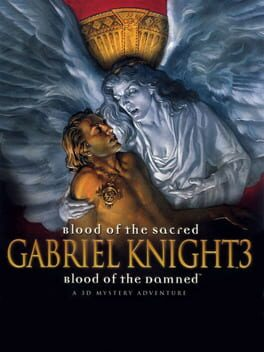
▲
1
▼
The game is notable for two puzzles considered by fans and critics to respectively be one of the best and worst ever made for an adventure game.
The puzzle "Le Serpent Rouge" ("The Red Snake") involves decoding torn-up poem stanzas by hunting for information during the game and solving geometric mapping puzzles. This puzzle was widely praised for its overarching complexity and intriguing nature regardless of the player's interest in the real-life mysteries of Rennes-le-Château, a Southern French commune crucial to the game's plot that has been covered in various books and conspiracy theories. The poem was originally included in the "Secret Files of Henri Lobineau", a 1967 dossier about the fraternal organization the Priory of Sion, and was modified to make the puzzle solvable. Lead designer Jane Jensen named it her favorite and most challenging puzzle, designing it around the game's fully controllable 3D camera.
Meanwhile, a puzzle designed by producer Steven Hill was disliked internally and was meant to be replaced with a puzzle by Jensen, but they were forced to leave it in the game due to time constraints. It starts with Gabriel Knight finding that his friend Detective Mosely arrived in France the night before in a tour group and is scheduled to rent a motorcycle that day, so he goes to rent one himself. The nearsighted rental stand clerk requires a passport to confirm arrivals, revealing that the only rides he has left are a bike saved for Mosely and a cheap scooter. To get the bike, Knight plans to disguise as Mosely by Spoiler:stealing his coat and passport, and hiding his long blonde hair in a hat, despite putting it in a visible ponytail. He then draws a mustache on Mosely's passport photo to obscure their facial differences, goes to a shed, puts masking tape on a hole in the shed door, sprays a nearby cat with water causing it to run into the tape and stick fur to it, and applies it to his face with some maple syrup from breakfast to make a fake mustache. The disguise inexplicably works, and Knight gets the bike.
Moreso than Le Serpent Rouge was praised, the disguise puzzle was roundly criticized for its lack of hints, the impossibility of Knight convincingly impersonating Mosely, and the cartoonish roundabout way of Spoiler:making the mustache clashing with the game's serious tone. Critics felt that while it was not the most difficult puzzle, the solution was too absurd for the average player to think it would work. The most scathing review came from future Valve writer Eric Wolpaw, who blamed Jensen for the poor design (it was not known at the time that she did not design it), and called the process of Spoiler:making the mustache "deranged", controversially declaring it was proof that adventure games "committed suicide". While Jensen disliked the puzzle, she thought it being the death of adventure games was "kinda overblown", and the "length of the sequence and the lack of hints" was what made it bad.
The puzzle "Le Serpent Rouge" ("The Red Snake") involves decoding torn-up poem stanzas by hunting for information during the game and solving geometric mapping puzzles. This puzzle was widely praised for its overarching complexity and intriguing nature regardless of the player's interest in the real-life mysteries of Rennes-le-Château, a Southern French commune crucial to the game's plot that has been covered in various books and conspiracy theories. The poem was originally included in the "Secret Files of Henri Lobineau", a 1967 dossier about the fraternal organization the Priory of Sion, and was modified to make the puzzle solvable. Lead designer Jane Jensen named it her favorite and most challenging puzzle, designing it around the game's fully controllable 3D camera.
Meanwhile, a puzzle designed by producer Steven Hill was disliked internally and was meant to be replaced with a puzzle by Jensen, but they were forced to leave it in the game due to time constraints. It starts with Gabriel Knight finding that his friend Detective Mosely arrived in France the night before in a tour group and is scheduled to rent a motorcycle that day, so he goes to rent one himself. The nearsighted rental stand clerk requires a passport to confirm arrivals, revealing that the only rides he has left are a bike saved for Mosely and a cheap scooter. To get the bike, Knight plans to disguise as Mosely by Spoiler:stealing his coat and passport, and hiding his long blonde hair in a hat, despite putting it in a visible ponytail. He then draws a mustache on Mosely's passport photo to obscure their facial differences, goes to a shed, puts masking tape on a hole in the shed door, sprays a nearby cat with water causing it to run into the tape and stick fur to it, and applies it to his face with some maple syrup from breakfast to make a fake mustache. The disguise inexplicably works, and Knight gets the bike.
Moreso than Le Serpent Rouge was praised, the disguise puzzle was roundly criticized for its lack of hints, the impossibility of Knight convincingly impersonating Mosely, and the cartoonish roundabout way of Spoiler:making the mustache clashing with the game's serious tone. Critics felt that while it was not the most difficult puzzle, the solution was too absurd for the average player to think it would work. The most scathing review came from future Valve writer Eric Wolpaw, who blamed Jensen for the poor design (it was not known at the time that she did not design it), and called the process of Spoiler:making the mustache "deranged", controversially declaring it was proof that adventure games "committed suicide". While Jensen disliked the puzzle, she thought it being the death of adventure games was "kinda overblown", and the "length of the sequence and the lack of hints" was what made it bad.
Gabriel Knight 3: Blood of the Sacred, Blood of the Damned - Le Serpent Rouge poem and walkthrough:
https://www.youtube.com/watch?v=y7b47CJrnyc
https://sierrachest.com/index.php?a=games&;id=39&title=gabriel-knight-3&fld=walkthrough&pid=101
Hunting Shadows: The Making of Gabriel Knight - Chapter 5:
https://web.archive.org/web/20200513021453/https://episodiccontentmag.com/2015/11/20/hunting-shadows-the-making-of-gabriel-knight-chapter-5-of-5/
Anastasia Salter - "Jane Jensen: Gabriel Knight, Adventure Games, Hidden Objects" (2017) - Influential Video Game Designers. Bloomsbury Publishing USA. ISBN 978-1501327452. (Pages 58-60):
https://books.google.com/books?id=cPEkDgAAQBAJ
Jane Jensen Adventure Gamers interview:
https://web.archive.org/web/20190715214638/https://adventuregamers.com/articles/view/18170
Le Serpent Rouge real poem article:
https://www.renneslechateau.nl/2012/01/13/the-red-serpent/
Le Serpent Rouge puzzle miscellaneous Adventure Gamers acclaim:
https://web.archive.org/web/20210715000329/https://adventuregamers.com/articles/view/18643/page/page4/page7/page10/N100/page15
https://web.archive.org/web/20170428013712/http://www.adventuregamers.com/articles/view/17459
https://web.archive.org/web/20170311222718/http://www.adventuregamers.com/articles/view/18586
Computer Gaming World - Issue #179, June 1999 (Page 63 in magazine):
https://archive.org/details/Computer_Gaming_World_Issue_179/page/n66/mode/1up?q=serpent
The Games Machine - No. 6, March 2008 (Page 68 in magazine):
https://archive.org/details/the-games-machine-italia-speciali-06/page/n67/mode/1up?q=serpent
Detective Mosely tour group context just before the puzzle:
https://www.youtube.com/watch?v=9hjzZ0z4b5E
Disguise puzzle footage:
https://www.youtube.com/watch?v=5hpcmJLrseI
https://www.youtube.com/watch?v=Xx3D9xb_sFg
Kotaku interview snippet:
https://web.archive.org/web/20200619041238/https://kotaku.com/how-we-survived-adventure-gamings-most-hair-tearingly-r-5903932
Computer Gaming World - Issue #189, April 2000 (Pages 74-75):
https://archive.org/details/Computer_Gaming_World_Issue_189
Old Man Murray (Eric Wolpaw) - Death of Adventure Games:
https://web.archive.org/web/20200405052244/http://www.oldmanmurray.com/features/79.html
Gamasutra interview mentioning impact of Old Man Murray blog post:
https://web.archive.org/web/20200618200402/https://www.gamasutra.com/view/feature/134850/spyparty_and_the_indie_ethos_.php?page=3
GamesRadar+ article:
https://web.archive.org/web/20200603224407/https://www.gamesradar.com/the-top-7-stupidest-puzzles/4/
InVisible Culture article (counterargument about the "death of adventure games"):
https://web.archive.org/web/20200622204402/http://ivc.lib.rochester.edu/the-kinesthetic-index-video-games-and-the-body-of-motion-capture/
https://www.youtube.com/watch?v=y7b47CJrnyc
https://sierrachest.com/index.php?a=games&;id=39&title=gabriel-knight-3&fld=walkthrough&pid=101
Hunting Shadows: The Making of Gabriel Knight - Chapter 5:
https://web.archive.org/web/20200513021453/https://episodiccontentmag.com/2015/11/20/hunting-shadows-the-making-of-gabriel-knight-chapter-5-of-5/
Anastasia Salter - "Jane Jensen: Gabriel Knight, Adventure Games, Hidden Objects" (2017) - Influential Video Game Designers. Bloomsbury Publishing USA. ISBN 978-1501327452. (Pages 58-60):
https://books.google.com/books?id=cPEkDgAAQBAJ
Jane Jensen Adventure Gamers interview:
https://web.archive.org/web/20190715214638/https://adventuregamers.com/articles/view/18170
Le Serpent Rouge real poem article:
https://www.renneslechateau.nl/2012/01/13/the-red-serpent/
Le Serpent Rouge puzzle miscellaneous Adventure Gamers acclaim:
https://web.archive.org/web/20210715000329/https://adventuregamers.com/articles/view/18643/page/page4/page7/page10/N100/page15
https://web.archive.org/web/20170428013712/http://www.adventuregamers.com/articles/view/17459
https://web.archive.org/web/20170311222718/http://www.adventuregamers.com/articles/view/18586
Computer Gaming World - Issue #179, June 1999 (Page 63 in magazine):
https://archive.org/details/Computer_Gaming_World_Issue_179/page/n66/mode/1up?q=serpent
The Games Machine - No. 6, March 2008 (Page 68 in magazine):
https://archive.org/details/the-games-machine-italia-speciali-06/page/n67/mode/1up?q=serpent
Detective Mosely tour group context just before the puzzle:
https://www.youtube.com/watch?v=9hjzZ0z4b5E
Disguise puzzle footage:
https://www.youtube.com/watch?v=5hpcmJLrseI
https://www.youtube.com/watch?v=Xx3D9xb_sFg
Kotaku interview snippet:
https://web.archive.org/web/20200619041238/https://kotaku.com/how-we-survived-adventure-gamings-most-hair-tearingly-r-5903932
Computer Gaming World - Issue #189, April 2000 (Pages 74-75):
https://archive.org/details/Computer_Gaming_World_Issue_189
Old Man Murray (Eric Wolpaw) - Death of Adventure Games:
https://web.archive.org/web/20200405052244/http://www.oldmanmurray.com/features/79.html
Gamasutra interview mentioning impact of Old Man Murray blog post:
https://web.archive.org/web/20200618200402/https://www.gamasutra.com/view/feature/134850/spyparty_and_the_indie_ethos_.php?page=3
GamesRadar+ article:
https://web.archive.org/web/20200603224407/https://www.gamesradar.com/the-top-7-stupidest-puzzles/4/
InVisible Culture article (counterargument about the "death of adventure games"):
https://web.archive.org/web/20200622204402/http://ivc.lib.rochester.edu/the-kinesthetic-index-video-games-and-the-body-of-motion-capture/
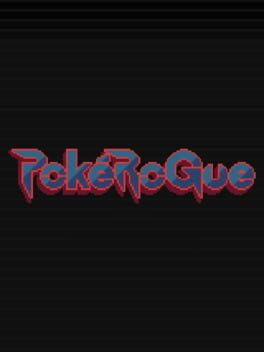
This trivia has been marked as "Not Safe for Work".
It may not be appropriate for all visitors and definitely isn't appropriate for work or school environments.
Click here to unhide it.
It may not be appropriate for all visitors and definitely isn't appropriate for work or school environments.
Click here to unhide it.
▲
2
▼
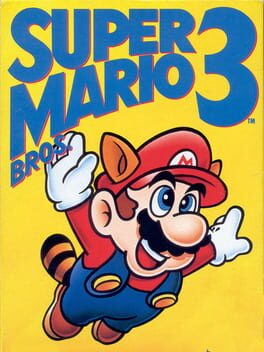
subdirectory_arrow_right Super Mario Maker 2 (Game)
▲
5
▼
 Many international Mario fans were confused by the design of the Angry Sun in the New Super Mario Bros. U style of Super Mario Maker 2, noticing how it appeared more stern than angry. This is due to the fact that "angry" is not part of the enemy's name in Japan, just being called "sun", meaning that anger is not an inherent part of the character and giving it a different expression would make more sense without knowledge of its localized name.
Many international Mario fans were confused by the design of the Angry Sun in the New Super Mario Bros. U style of Super Mario Maker 2, noticing how it appeared more stern than angry. This is due to the fact that "angry" is not part of the enemy's name in Japan, just being called "sun", meaning that anger is not an inherent part of the character and giving it a different expression would make more sense without knowledge of its localized name.The new design of the "Angry" Sun seems to be based on pre-colonial mythology based on the sun, most particularly the Inca sun god Inti, a design inspiration that seems to exist in anthropomoprhic suns from multiple other Nintendo games such as The Legend of Zelda: Ocarina of Time, Mole Mania, and Kid Icarus: Of Myths and Monsters
Angry Sun name:
https://www.suppermariobroth.com/post/727215192118837248/mariowikicomfilesmm2-nsmbu-angrysungif
Video detailing the potential influence for the new Angry Sun:
https://www.youtube.com/watch?v=zPVIekKLZWQ
https://www.suppermariobroth.com/post/727215192118837248/mariowikicomfilesmm2-nsmbu-angrysungif
Video detailing the potential influence for the new Angry Sun:
https://www.youtube.com/watch?v=zPVIekKLZWQ
Franchise: God of War
▲
1
▼
Kratos appears in actual Greek mythology as a Daimon or lesser god of strength. He is most notable for being the brother of Nike. Besides the coincidence of their name, this character bears no actual resemblance to the protagonist of the God of War series.
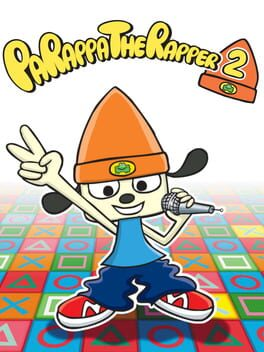
▲
1
▼
Two lyrics in PaRappa the Rapper 2 were censored for the US release - "We cook the best, tastes better than wine!" was changed to "We cook the best, you better get in line!" in Toasty Buns, and "I am the lord, everybody knows my name" was changed to "I am the man, everybody knows my name" in BIG and it's reprise in Food Court.

subdirectory_arrow_right Pac-Man Museum+ (Game)
▲
1
▼
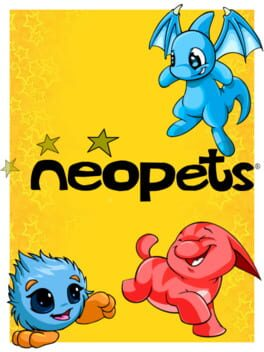
▲
1
▼
Neopets' former CEO Dough Dohring was an avid Scientologist, and used L. Ron Hubbard's "Org Board" method for running the business. Neopets founders Adam and Donna Powell were unaware of Dohring's ties to the cult when signing on to allow him to run the company, and it supposedly did not affect the inner workings of the company, though most of the employees were Scientologists and Dohring would often propose implementing Scientology education into the website. Williams would claim of the ownership in a 2014 Reddit AMA:
Dohring would leave Neopets after it was acquired by Viacom in 2005.
"Yes. Although we were not aware of it at first as we were totally naive.
Basically the first group of investors (who were the guys that had spare office space in Glendale as their automotive firm was being downsized) were scientologists.
When we realised it was a bit of a shock. Somewhat awkward moment when you realise you started the biggest entertainment site visited by millions of children and teens, but the upper management you just signed the company over to are part of some weird religion that is banned in some countries...
The company was structured like a scientology org. It didnt really change anything that I noticed apart from some odd test that interviewees had to take consisting of questions like which straight line seemed friendlier and stuff like that. We also had a lot of obscure celebrities coming round the office for tours.
At one time there was some talk about putting scientology education on the site, but we killed that idea pretty sharpish.
Adam and I made sure that it never made its way onto anything site related. Religion and politics were two big no nos for us as far as site content went. Can't say the discussions we had to keep it that way were much fun though!"
Basically the first group of investors (who were the guys that had spare office space in Glendale as their automotive firm was being downsized) were scientologists.
When we realised it was a bit of a shock. Somewhat awkward moment when you realise you started the biggest entertainment site visited by millions of children and teens, but the upper management you just signed the company over to are part of some weird religion that is banned in some countries...
The company was structured like a scientology org. It didnt really change anything that I noticed apart from some odd test that interviewees had to take consisting of questions like which straight line seemed friendlier and stuff like that. We also had a lot of obscure celebrities coming round the office for tours.
At one time there was some talk about putting scientology education on the site, but we killed that idea pretty sharpish.
Adam and I made sure that it never made its way onto anything site related. Religion and politics were two big no nos for us as far as site content went. Can't say the discussions we had to keep it that way were much fun though!"
Dohring would leave Neopets after it was acquired by Viacom in 2005.
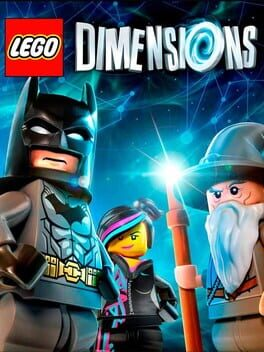
subdirectory_arrow_right Portal (Franchise)
▲
1
▼
In the credits of Lego Dimensions, the subtitles have a long ellipsis when GLADoS sings a long note, with commas inserted. If translated into binary code, with commas as 1's and periods as 0's, it reads as "1jhn1:9", or "1 John 1 v 9", a Bible verse corresponding to GLADoS' previous line "I forgive you everything":
"If we confess our sins, He is faithful and just to forgive us our sins and to cleanse us from all unrighteousness."

▲
1
▼
Traveler's Tales had intended to slide a Christian Easter egg into Toy Story 2: Buzz Lightyear to the Rescue!, inserting a sticker on a suitcase reading "JOHN 3:16", a citation for a Bible verse reading:
When Disney saw it, they insisted that it be removed, so in the final game the sticker simply reads "NY CITY".
"For God so loved the world, that He gave His only begotten Son, that whosoever believeth in Him should not perish, but have everlasting life."
When Disney saw it, they insisted that it be removed, so in the final game the sticker simply reads "NY CITY".

▲
1
▼
In Resort Island in Sonic R, there is a small village next to a cave containing 3 buildings, one of which has an ichthys (known colloquially as the "Jesus fish") on it. When it was added to the game, Sega asked Travelers' Tales founder Jon Burton if it was intended as a Christian reference, and nonchalantly gave the go-ahead when he answered honestly.

▲
1
▼
Puggsy features a secret level unlockable by completing a math question hidden in the credits. The level contains nothing but the words "ALL LEVELS COMPLETE" and "REV 22v21", the latter being the citation for a Christian Bible verse reading:
This Easter egg was added to the game by Traveler Tales' founder Jon Burton, a devout Christian.
"The grace of our Lord Jesus Christ be with you all. Amen."
This Easter egg was added to the game by Traveler Tales' founder Jon Burton, a devout Christian.

▲
1
▼
The game's plot is inspired by the real-life string of Magdalene Laundries, specifically those in Ireland and Australia. Named after the Biblical figure Mary Magdalene, these were Protestant or Roman Catholic institutions ostensibly designed to house "fallen women" (i.e. sexually promiscuous women, prostitutes, young women who became pregnant outside of marriage, or young girls and teenagers who did not have familial support) by taking them in, or occasionally kidnapping them, and forcing them to work in laundries commercially-run by local nun convents under poor conditions and exploitative abuse.
A series of paintings by Rachael Romero, an Australian girl who fled from her abusive father and for a time worked in a Magdalene Laundry in the city of Adelaide, inspired the overall design of the game's laundry room and general aesthetics. The room, and certain objects such as a machine and a wooden basket, were also directly based on pictures from these laundries.
A series of paintings by Rachael Romero, an Australian girl who fled from her abusive father and for a time worked in a Magdalene Laundry in the city of Adelaide, inspired the overall design of the game's laundry room and general aesthetics. The room, and certain objects such as a machine and a wooden basket, were also directly based on pictures from these laundries.
Developer video:
https://www.youtube.com/watch?v=wi06nbo7FGo
Several articles about the Magdalene Laundries in Ireland and Australia:
http://jfmresearch.com/home/preserving-magdalene-history/about-the-magdalene-laundries/
https://www.irishcentral.com/roots/history/ireland-last-magdalene-laundry
https://www.abc.net.au/news/2014-09-05/rachael-romero-art-magdalene-laundries-cruelty-to-women-girls/5720458
https://www.youtube.com/watch?v=wi06nbo7FGo
Several articles about the Magdalene Laundries in Ireland and Australia:
http://jfmresearch.com/home/preserving-magdalene-history/about-the-magdalene-laundries/
https://www.irishcentral.com/roots/history/ireland-last-magdalene-laundry
https://www.abc.net.au/news/2014-09-05/rachael-romero-art-magdalene-laundries-cruelty-to-women-girls/5720458

▲
2
▼
 The fifth recolor of the Goddess of Explosions' second alt, War Queen, is a reference to a Swedish holiday known as Saint Lucia's Day, where a girl or woman is chosen to dress with a wreath of candles, red belt, and white robe to represent the legendary Christian martyr Saint Lucia.
The fifth recolor of the Goddess of Explosions' second alt, War Queen, is a reference to a Swedish holiday known as Saint Lucia's Day, where a girl or woman is chosen to dress with a wreath of candles, red belt, and white robe to represent the legendary Christian martyr Saint Lucia.
Saint Lucia's Day article on Sweden tourism website:
https://visitsweden.com/what-to-do/culture-history-and-art/swedish-traditions/christmas/lucia/
Goddess of Explosions costumes:
https://slapcity.wiki.gg/wiki/Costumes#Goddess_of_Explosions
https://visitsweden.com/what-to-do/culture-history-and-art/swedish-traditions/christmas/lucia/
Goddess of Explosions costumes:
https://slapcity.wiki.gg/wiki/Costumes#Goddess_of_Explosions

▲
1
▼
 In a Japan-exclusive Shogakukan Wonder Life Special guidebook authored by Nintendo and Ape Inc., there is artwork depicting Link praying before a Crucifix, contrasting the game's origin story of the three Golden Goddesses, but also fitting with the Japanese version of the game calling the Sanctuary a Church. The Church's name was changed to the Sanctuary outside of Japan, presumably due to Nintendo's international policy on religious imagery, although this artwork and the rest featured in this guidebook were never republished internationally as other publishers released their own guides instead.
In a Japan-exclusive Shogakukan Wonder Life Special guidebook authored by Nintendo and Ape Inc., there is artwork depicting Link praying before a Crucifix, contrasting the game's origin story of the three Golden Goddesses, but also fitting with the Japanese version of the game calling the Sanctuary a Church. The Church's name was changed to the Sanctuary outside of Japan, presumably due to Nintendo's international policy on religious imagery, although this artwork and the rest featured in this guidebook were never republished internationally as other publishers released their own guides instead.

▲
1
▼
 The stock sound effect of an Islamic chant which sparked controversy for being used in the original Fire Temple theme from The Legend of Zelda: Ocarina of Time and in the soundtrack to Kakuto Chojin: Back Alley Brutal was first used in the music track 'Cairo Cruis'n' for the Egypt race track in the Nintendo 64 version of Cruis'n World. The chant comes from a sound library collection called "Voice Spectral - Volume 1" released by 'best service'.
The stock sound effect of an Islamic chant which sparked controversy for being used in the original Fire Temple theme from The Legend of Zelda: Ocarina of Time and in the soundtrack to Kakuto Chojin: Back Alley Brutal was first used in the music track 'Cairo Cruis'n' for the Egypt race track in the Nintendo 64 version of Cruis'n World. The chant comes from a sound library collection called "Voice Spectral - Volume 1" released by 'best service'.
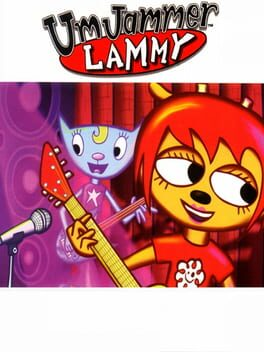
subdirectory_arrow_right Um Jammer Lammy Now (Game)
▲
1
▼
There are two versions of the 6th stage. In the Japanese and PAL versions of the game, the stage takes place in hell. In the American version, the stage instead takes place on a volcanic island. Both stages have different graphics for Lammy, a different intro cutscene, and a slight change in lyrics in the first stage to remove any references to hell or the devil. The Japan-exclusive Um Jammer Lammy NOW! retains the island plot from the US release.

subdirectory_arrow_right The Legend of Zelda (Franchise)
▲
1
▼
 The Gerudo, a race first introduced in The Legend of Zelda: Ocarina of Time, were largely inspired by the Arabic and Egyptian civilizations in the medieval Middle East. This can be alluded to by the Arabic and Egyptian themed locations and sculptures that the series has has to offer, in addition to the original design of the Crest of the Gerudo resembling an Islamic star and crescent. This symbol can be seen throughout the original release of Ocarina of Time on blocks, floor switches, and even the Mirror Shield. The similarities to the Islamic symbol caused controversy, and was changed to a new symbol in all re-releases of the game.
The Gerudo, a race first introduced in The Legend of Zelda: Ocarina of Time, were largely inspired by the Arabic and Egyptian civilizations in the medieval Middle East. This can be alluded to by the Arabic and Egyptian themed locations and sculptures that the series has has to offer, in addition to the original design of the Crest of the Gerudo resembling an Islamic star and crescent. This symbol can be seen throughout the original release of Ocarina of Time on blocks, floor switches, and even the Mirror Shield. The similarities to the Islamic symbol caused controversy, and was changed to a new symbol in all re-releases of the game.
Crest of the Gerudo:
https://zelda.fandom.com/wiki/Crest_of_the_Gerudo
[Below links and additional info provided by CuriousUserX90.]
Assorted Middle Eastern inspirations:
https://zelda.fandom.com/wiki/Medieval_elements_in_The_Legend_of_Zelda_series#Middle_Eastern_inspirations
Page dedicated to information about the Gerudo race:
https://www.architectureofzelda.com/gerudo-town-and-the-great-desert.html
Zelda Dungeon article about Gerudo race:
https://www.zeldadungeon.net/an_examination_in_orientalism_in_zelda_the_gerudo/
https://zelda.fandom.com/wiki/Crest_of_the_Gerudo
[Below links and additional info provided by CuriousUserX90.]
Assorted Middle Eastern inspirations:
https://zelda.fandom.com/wiki/Medieval_elements_in_The_Legend_of_Zelda_series#Middle_Eastern_inspirations
Page dedicated to information about the Gerudo race:
https://www.architectureofzelda.com/gerudo-town-and-the-great-desert.html
Zelda Dungeon article about Gerudo race:
https://www.zeldadungeon.net/an_examination_in_orientalism_in_zelda_the_gerudo/
Franchise: The Legend of Zelda
▲
1
▼
 The Triforce was most likely based on the Mitsuuroko (or "The Three Scales"), the real life symbol of the Hōjō Clan who took control of Japan in the 13th century. Considering the prominence of Christian symbolism in the first two games in the series, the Triforce has also been theorized to symbolize the Christian doctrine of the Trinity defining God as the Father (Triforce of Power), the Son (Triforce of Courage), and the Holy Spirit (Triforce of Wisdom).
The Triforce was most likely based on the Mitsuuroko (or "The Three Scales"), the real life symbol of the Hōjō Clan who took control of Japan in the 13th century. Considering the prominence of Christian symbolism in the first two games in the series, the Triforce has also been theorized to symbolize the Christian doctrine of the Trinity defining God as the Father (Triforce of Power), the Son (Triforce of Courage), and the Holy Spirit (Triforce of Wisdom).
Kotaku article:
http://kotaku.com/5823249/the-real-history-of-the-triforce
Video analyzing possible Christian influences in Triforce design [link provided by CuriousUserX90]:
https://www.youtube.com/watch?v=4GTBHTjElZM
http://kotaku.com/5823249/the-real-history-of-the-triforce
Video analyzing possible Christian influences in Triforce design [link provided by CuriousUserX90]:
https://www.youtube.com/watch?v=4GTBHTjElZM

▲
1
▼
The music for the Fire Temple once had chanting of an Islamic prayer as a part of the background music. The chanting was a stock sound effect from a sound library collection called "Voice Spectral - Volume 1" released by 'best service', and it also showed up in games like Cruis'n World for the Nintendo 64 and Kakuto Chojin: Back Alley Brutal for Xbox. Seeing the problems it could have caused, Nintendo changed it, and the updated version of the Fire Temple replaced the chanting with the wails and moans from the Shadow Temple's music.
| keyboard_double_arrow_leftFirst keyboard_arrow_leftPrev | Page 1 of 2 | Nextkeyboard_arrow_right Lastkeyboard_double_arrow_right |
